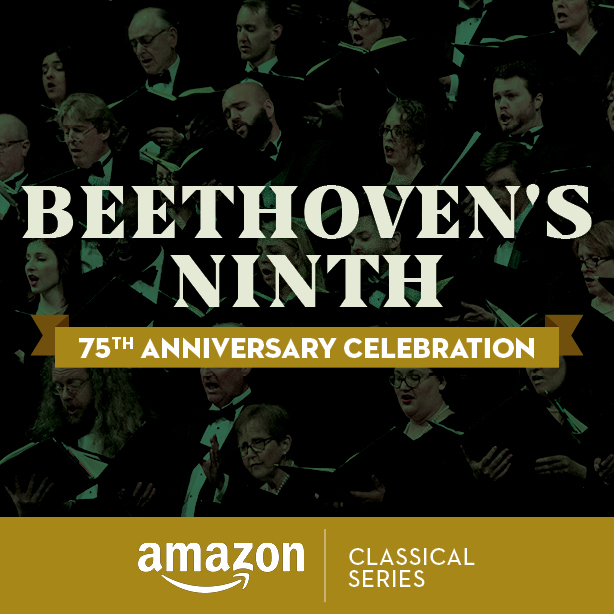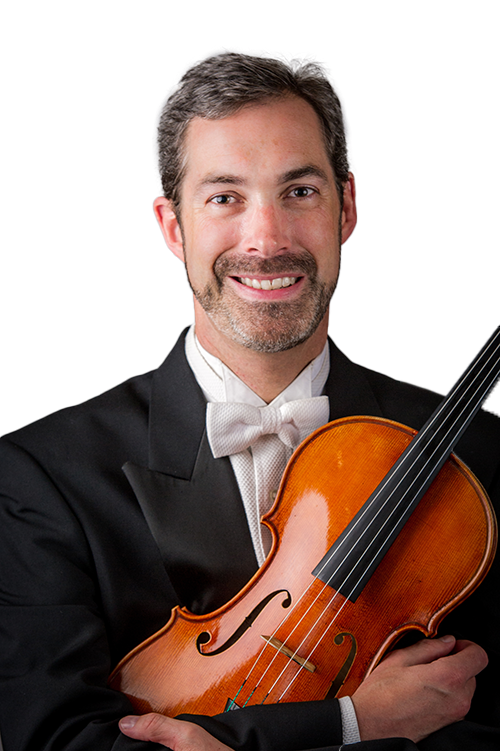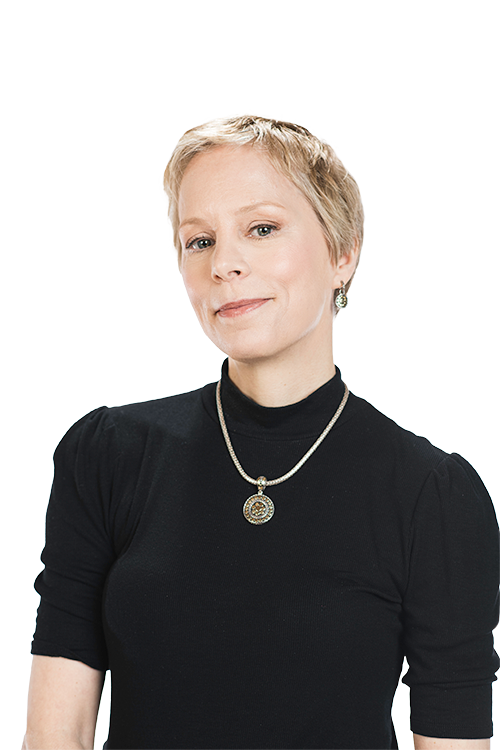
To close its 75th-anniversary season, the Nashville Symphony combines one of the core works of orchestral literature with two new pieces by American composers —a juxtaposition of the known and the new that is a signature of this orchestra, which regularly champions music from our own time. The program begins with the world premiere of a piece by the orchestra’s own Christopher Farrell. A longstanding violist, Farrell was given the formidable assignment of sharing the bill with Beethoven’s final symphony, a work that has acquired quasi-religious status as a central part of the classical repertoire. In Continuum, Farrell explores how the life of an orchestra—just like the life of an individual—develops in a continuous process of change, sometimes imperceptibly; those changes “manifest in a new present.”
The title Brio is frequently encountered as a musical instruction, especially in the work of Ludwig van Beethoven. (It’s the marking he gives for the first movement of his Fifth Symphony, for example.) In the hands of the prolific American composer Augusta Read Thomas, Brio is an animated, gemlike miniature that takes us on a kaleidoscopic journey across the infinite spectrum of orchestral color and energy.
Beethoven combined a full orchestra with chorus and a quartet of soloists to realize the vision of his last symphony—thereby expanding the scope of what a symphony in the Classical era was believed to signify. The Ninth has long exerted its powerful influence far beyond the concert hall. Best known by the title Friedrich Schiller gave to the revolutionary poem sung in the lengthy final movement—“Ode to Joy”—the Ninth is about much more than a paean to the power of joy. The first movement alone ranks among the most devastating musical expressions of tragedy. Beethoven’s Ninth anticipates something of Mahler’s all-encompassing concept of the symphony.
 |
|
|
|
|
|
|
|
|
|
|
|
|
Christopher Farrell has been playing viola with the Nashville Symphony since 1999. Also a composer, educator, and avid chamber and studio musician, he received his undergraduate and master’s music degrees from the University of North Texas and Indiana University, respectively, and was a member of the Knoxville Symphony before taking up his position with Nashville. Farrell’s path to composition was unusual—and unexpected. He recalls writing brief encores for his string quartet while in college. “These were intended to be jokes, in which I would combine a TV show theme or another familiar tune with something classical.”
But it wasn’t until 10 or 11 years ago that Farrell began seriously writing his own music. For a Christmas holiday gig where he planned to play in a program of string trios, he need to put together some Christmas carols arranged for violin, viola, and cello. “I realized it would be cheaper to write my own arrangements than to buy preexisting ones. And that is what started me composing. The difference between composing and arranging is simply that, if you’re a composer, you start with your own melody instead of somebody else’s.”
Farrell began writing string quartets for the ALIAS Chamber Ensemble, which was founded in 2002 by a group of Nashville Symphony musicians. Along with four string quartets to date, his oeuvre includes sonatas and other chamber pieces for small ensembles. Continuum is Farrell’s first full orchestral piece and was commissioned to celebrate the 75th anniversary of the Nashville Symphony Orchestra. The composer has dedicated the score to Mark and Nancy Peacock “because their generosity has helped make so many performances possible,” he says. Farrell initially composed the piece just after the Covid pandemic had caused the first round of shutdowns. As a result, he could not be sure how large an orchestra would be available. “So at first I wrote an entirely different piece for a chamber ensemble. That turned out to be my test piece. When it became clear that we were going to be able to have a full orchestra onstage. I decided to try something different and went back to square one to write a whole different piece."
His experience as a longtime professional orchestral musician who has played “a bunch of new and old music” over the years informs Farrell’s perspective on composing for orchestra. “Being a viola player, you're in the middle of everything.” He also mentions Ottorino Respighi, Claude Debussy, and Igor Stravinsky as models for his approach to orchestration.
The title Continuum occurred to Farrell when he compared the history of an orchestra with what happens to us in our individual lives. He defines a “continuum” as “a course of events that changes, sometimes imperceptibly, such that when you get to another point down the line and look back, you see that things have changed drastically but you didn't realize it was happening at the time.” For Farrell, “an orchestra also has a life, and the changes it undergoes manifest in a new present, just like people and their experiences. It’s an organization that has a life that is changed by the people and the events involved in it. And then it continues on, hopefully in a good way. Music is a good medium for conveying that idea because you take a melodic idea and can bring new perspectives to what it is and where it's going. That’s the core idea of Continuum.
WHAT TO LISTEN FOR
Following a strategy similar to the one Beethoven uses at the start of his Ninth Symphony, Farrell presents a quietly mysterious introduction of string chords punctuated by harp and glockenspiel to establish a sense of expectation at the outset. The “continuum” theme is first played by a solo trumpet. This is the first of Continuum’s two main musical ideas. The second is a “welcoming” theme presented by the violas (“Who says the violins always have to get the big melody?” Farrell says with a grin, admitting a certain partisanship toward his own instrument.) Continuum proceeds as an alternation between these two ideas, which are taken apart and then reconstructed. In the coda, they converge into a unified whole, “no longer separate concepts.”
Scored for 2 flutes and piccolo, 2 oboes, English horn, 2 clarinets, bass clarinet, 2 bassoons, contrabassoon, 4 horns, 3 trumpets, 3 trombones, tuba, timpani, 4 percussionists, harp and strings.
 |
|
|
|
|
|
|
|
|
|
|
|
|
|
|
|
Augusta Read Thomas grew up playing piano and trumpet and began composing at an early age. Her prolific and versatile output ranges from exquisitely jeweled chamber music to opera, choral works, and compositions for orchestra, many of which originated as commissions from leading American and European ensembles. Thomas was one of two finalists for the 2007 Pulitzer Prize in Music for her work Astral Canticle. In 2009, she was inducted into the American Academy of Arts and Letters.
Thomas refers to the “perfumes” of especially admired composers that can be sensed in her own work—Debussy, Varèse, Ravel, the early Stravinsky—while J.S. Bach remains a pole star, “my all-time idol.” Influences of jazz can also be heard in Brio, a brief concert work dedicated to Carolyn (Kay) Bucksbaum, whose son and daughter (John Bucksbaum and Ann Bucksbaum Friedman) commissioned the piece as a gift. Thomas describes Carolyn Bucksbaum as an “arts devotee, innovator, philanthropist, and dear friend.”
The title is frequently encountered as a musical instruction. Beethoven was especially fond of it and asks for the first movement of his Fifth Symphony, for example, to be played “Allegro con brio”—Allegro with brio. Thomas cites the Webster’s Dictionary entry on the noun: “Let’s give this celebration the brio it deserves!—vigor, vivacity, gusto, verve, zest, enthusiasm, vitality, dynamism, animation, spirit, energy; informal pep, vim, get-up-and-go.” With the title Brio, she aimed to convey “the spirit of Kay’s magnificence, twinkle, and positive energy.”
WHAT TO LISTEN FOR
“I care about craft, clarity, and passion,” explains the composer. “My works are organic and, at every level, concerned with transformations and connections. The carefully sculpted musical materials of Brio are agile and energized, and their flexibility allows a way to braid harmonic, rhythmic, and contrapuntal elements that are constantly transformed—at times whimsical and light, at times jazzy, at times layered and reverberating.”
Brio “unfolds a labyrinth of musical interrelationships and connections,” Thomas writes, which present the musicians “in a virtuosic display of rhythmic agility, counterpoint, skill, energy, dynamic range, clarity, and majesty. Throughout the kaleidoscopic journey, the work passes through many lively and colorful episodes and, via an extended, gradual crescendo, reaches a full-throttle, sparkling intensity—imagine a coiled spring releasing its energy to continuously propel the musical discourse. Vivid, clangorous, brassy, and blazing, Brio culminates in music of enthusiastic, intrepid (almost Stravinsky-like) spirits while never losing its sense of dance, caprice, and effervescence.”
Brio is scored for 2 flutes (2nd doubling piccolo), 2 oboes, English horn, 2 clarinets, bass clarinet, 2 bassoons (2nd doubling contrabassoon), 4 horns, 3 trumpets, 3 trombones, tuba, timpani, percussion, harp, celesta and strings.
 |
|
|
|
|
|
|
|
|
|
|
|
|
|
|
|
Beethoven’s Symphony No. 9 is not just an icon of the repertoire: it actually helped shaped the institution of the permanent symphony orchestra that crystallized in the 19th century. Independent orchestras devoted to concert music had developed sporadically in other cities like Paris and London but did not become standard until after Beethoven’s death. The challenge of performing the last of his nine symphonies acted as a spur and inspired new standards of rehearsal thanks to the technical demands Beethoven makes of his orchestral and choral forces.
A commission from one of those rare metropolitan orchestras of the time, the Philharmonic Society of London (established as recently as 1813), prompted Beethoven to return to the symphonic genre in 1817, after a gap of some five years, during which the composer endured one of his most serious personal crises. Beethoven wasn’t able to focus on composing the Ninth until 1822, completing the score in February 1824.
The first audience to hear this music gathered for a Friday evening spring concert in Vienna on May 7, 1824, three years before Beethoven’s death; he hadn’t appeared onstage before the general public in a dozen years. These listeners must have realized they were experiencing something unprecedented, even though the orchestra had had time for just two full rehearsals. Throughout his career, Beethoven organized programs employing freelancers from the various theater orchestras to present his latest compositions; he was responsible for his own marketing.
Before Gustav Mahler cultivated the symphony as a form that must “embrace everything,” Beethoven was creating a cosmos of his own out of the language and techniques he had inherited from such models as Haydn and Mozart—with the help of rousing poetry Friedrich Schiller had published in 1785, on the event of the French Revolution. But the Ninth Symphony is about much more than that its concluding “Ode to Joy.” The first movement alone ranks among the most overpowering musical expressions of tragedy—or even apocalypse, depending on your interpretation. And what to make of the Scherzo, with its primordial energy and strange rhythmic insistence (and, in its contrasting trio section, yet another kind of “joy”)? Where does the unearthly, transcendent beauty of the Adagio—a model Mahler would emulate in some of his moving passages—fit into the bigger picture of a work whose destination is supposed to be a toast to “joy”?
“We live in the valley of the Ninth,” the influential musicologist Joseph Kerman once observed. This symphony has cast its shadow over Beethoven’s successors right up to our own time. But its influence extends beyond the concert hall to our culture as a whole. From commercials and ringtones to New Year rituals between swigs of eggnog and champagne, the Ninth seems ever-present. To the world historical, the Ninth is somehow always present. Leonard Bernstein chose this music to celebrate the supposed end of the Cold War in 1989, when the Berlin Wall came down, changing the keyword Freude (“joy”) to Freiheit (“freedom”).
Yet the power of the Ninth has inevitably been misused. Although the utopian message of universal embrace in opposition to the “divisions” of the conventional order has been an inspiration to bravery during turning points in world history, the Nazis twisted it and used the Ninth to celebrate Hitler’s birthday. Especially in the wake of the 20th century’s catastrophes and the insecurities of the 21st, the unfulfilled promise Beethoven voices does not lack for severe critics. The pressure of Beethoven’s influence over generations of composers has even induced a gleeful iconoclasm on the part of some. In his diary, the American composer Ned Rorem lashes out at the Ninth as “the first piece of junk in the grand style.” In Thomas Mann’s novel Doktor Faustus, the protagonist-composer announces his desire to “revoke” the Ninth and its complicity with bad faith.
“Some enshrine it, others attempt to tear it down,” writes David Benjamin Levy in his study of the Ninth Symphony and its background. Yet “the mountain remains,” he continues, “and, as is the case with revelation itself, the essential truth of the Ninth Symphony can be neither proven nor disproven. Coming to terms with the work involves a kind of leap of faith.”
WHAT TO LISTEN FOR
At the outset, Beethoven imagines a way of beginning a musical work—and a cosmos—that has influenced generations of composers since. Thematic shards coalesce until, with a mighty increase in power, Beethoven hammers them together into his titanic main theme. Even the lyrical grace of the contrasting second theme, which foreshadows the “Joy” melody to come in the finale, gets swept away in the tempestuous surge of developing ideas. The suspenseful closing section ratchets up the tension even more through a thrilling gradual crescendo.
The propulsive Scherzo is positioned second rather than third in order—the only time Beethoven does hits in his nine symphonies. In a way, its energy mirrors the elemental character of the first movement—music of colossal forces at play. With the Adagio, Beethoven embarks on a journey of deep, sustained, at times ecstatic contemplation. The movement unfolds as a set of double variations: that is, variations on two highly contrasting themes, in different keys and tempi, that alternate one with the other.
Until this point, Beethoven has essentially followed the Classical model of a four-movement symphony, albeit with an expanded sense of proportions and an intensity of language whose only precedent is in his own preceding symphonies. By introducing the human voice in the last movement, the Ninth stakes out new territory for the symphony. And the way Beethoven stages the emergence of that voice from the drama of instrumental music is also revolutionary. The finale begins with a terrifying chord that immediately takes us right back to the chaos out of which the Ninth sprang into being in the first movement. But here, the chaos is violent and rupturing rather than mysterious. The orchestra reminisces on the ideas that have appeared so far. But with wordless insistence, the low strings reject each of these propositions as unsuitable.
The instruments show the way at first, presenting and developing the “Joy” theme in successive layerings. But the chord of terror reappears, as if all that has been achieved is hopeless. Suddenly, a solo baritone bursts on the scene with the urgent plea to keep to the theme of joy—which turns out to be connected to unity, to solidarity, to love, and to a sense of the transcendent. For his purpose, Beethoven adapted excerpts from Schiller’s lengthy poem (and added some of his own verse).
Like the third movement, the rest of this vast finale involves the principle of variations on a theme. At one extreme, the variations make room for eccentric humor, like the gruff “recharging” of the action by a contrabassoon after the music seems to have run aground. What follows is a variation featuring the solo tenor (in precariously high range) against clanging cymbals and the sounds of a military band. Another extreme is found in the lofty tone of the music associated with a providence “beyond the starry firmament,” where Beethoven portrays feelings of sacred awe.
Visionary as the Ninth Symphony is, Beethoven also pays homage to the wisdom of tradition. He joins his varied ideas together to create a larger unity through age-old techniques, while the rousing choral music of Handel’s oratorios was an acknowledged inspiration. In our present era of disillusion, Beethoven’s final symphony, premiered almost two centuries ago, feels as urgently necessary as ever.
Scored for 2 flutes and piccolo, 2 oboes, 2 clarinets, 2 bassoons and contrabassoon, 4 horns, 2 trumpets, 3 trombones, timpani, triangle, bass drum, cymbals and strings, along with solo vocal quartet (soprano, alto, tenor, and bass) and four-part chorus (in the fourth movement only)
